Click on images to enlarge

habit (Photo: Sheldon Navie)
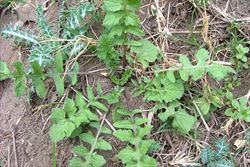
basal rosette of deeply-lobed leaves (Photo: Sheldon Navie)
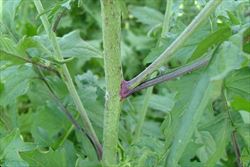
close-up of roughly hairy stem (Photo: Sheldon Navie)

deeply-lobed leaves (Photo: Sheldon Navie)
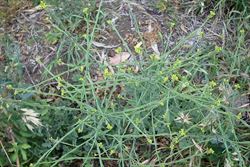
spreading flower clusters (Photo: Sheldon Navie)
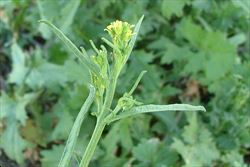
uppermost leaves and young flower cluster (Photo: Sheldon Navie)
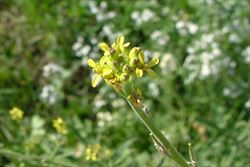
close-up of small yellow flowers (Photo: Sheldon Navie)
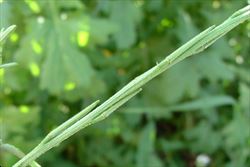
close-up of immature hairy fruit (Photo: Sheldon Navie)
Scientific Name
Sisymbrium officinale (L.) Scop.
Synonyms
Erysimum officinale L.
Family
Brassicaceae (Queensland, New South Wales, the ACT, Victoria, Tasmania, Western Australia and the Northern Territory)Cruciferae (South Australia)
Common Names
common hedge mustard, hairy hedge mustard, hairy-pod hedgemustard, hairypod hedgemustard, hedge mustard, hedge tumblemustard, hedge weed, hedge wild mustard, hedgemustard, hedgeweed, tumble mustard, wild mustard, wild rocket
Origin
Native to north-western Africa, the Azores, the Madeira Islands, the Canary Islands, Europe, the middle-east, western Asia and Russia.
Naturalised Distribution
Widely naturalised in southern and eastern Australia (i.e. in south-eastern and central Queensland, New South Wales, the ACT, Victoria, Tasmania, the south-eastern and southern parts of South Australia, and the south-western and southern parts of Western Australia). Also naturalised on Lord Howe Island and Norfolk Island.
Widely naturalised in other parts of the world, including most of North America (i.e. Alaska, Canada and the USA), New Zealand and Hawaii.
Notes
Hedge mustard (Sisymbrium officinale) is sometimes regarded as an environmental weed in the ACT, Victoria and South Australia. It is also a common weed of crops, pastures, roadsides, disturbed sites and waste areas in southern and eastern Australia.

